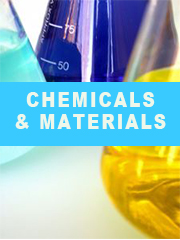Report overview
Dihydroxybenzenes, also known as Benzenediols, are organic chemical compounds in which two hydroxyl groups are substituted onto a benzene ring. There are three isomers, including Catechol(1,2-benzenediol), Resorcinol(1,3-benzenediol),Hydroquinone(1,4-benzenediol).
This report aims to provide a comprehensive presentation of the global market for Dihydroxybenzenes (Catechol, Resorcinol, Hydroquinone), with both quantitative and qualitative analysis, to help readers develop business/growth strategies, assess the market competitive situation, analyze their position in the current marketplace, and make informed business decisions regarding Dihydroxybenzenes (Catechol, Resorcinol, Hydroquinone). This report contains market size and forecasts of Dihydroxybenzenes (Catechol, Resorcinol, Hydroquinone) in global, including the following market information:
Global Dihydroxybenzenes (Catechol, Resorcinol, Hydroquinone) Market Revenue, 2018-2023, 2024-2029, ($ millions)
Global Dihydroxybenzenes (Catechol, Resorcinol, Hydroquinone) Market Sales, 2018-2023, 2024-2029, (K Tons)
Global top five Dihydroxybenzenes (Catechol, Resorcinol, Hydroquinone) companies in 2022 (%)
The global Dihydroxybenzenes (Catechol, Resorcinol, Hydroquinone) market was valued at US$ 1408.2 million in 2022 and is projected to reach US$ 1891.7 million by 2029, at a CAGR of 4.3% during the forecast period. The influence of COVID-19 and the Russia-Ukraine War were considered while estimating market sizes.
To Catechol, France is the largest market with about 23% market share. USA is follower, accounting for about 19% market share.
The key players are Rohdia, UBE Industries, Camlin Fine Chemicals, Jiangsu Sanjili, Sumitomo Chemical, Shanghai Amino-Chem, Indspec Chemical, Mitsui Chemicals, Hubei Xiangyun, Rohdia, Eastman, Mitsui Chemicals, UBE Industries, Camlin Fine Chemicals, YanCheng FengYang Chemical, Jiangsu Sanjili etc. Top 3 companies occupied about 85% market share.
We surveyed the Dihydroxybenzenes (Catechol, Resorcinol, Hydroquinone) manufacturers, suppliers, distributors and industry experts on this industry, involving the sales, revenue, demand, price change, product type, recent development and plan, industry trends, drivers, challenges, obstacles, and potential risks.
Total Market by Segment:
Global Dihydroxybenzenes (Catechol, Resorcinol, Hydroquinone) Market, by Type, 2018-2023, 2024-2029 ($ Millions) & (K Tons)
Global Dihydroxybenzenes (Catechol, Resorcinol, Hydroquinone) Market Segment Percentages, by Type, 2022 (%)
Catechol
Resorcinol
Hydroquinone
Global Dihydroxybenzenes (Catechol, Resorcinol, Hydroquinone) Market, by Application, 2018-2023, 2024-2029 ($ Millions) & (K Tons)
Global Dihydroxybenzenes (Catechol, Resorcinol, Hydroquinone) Market Segment Percentages, by Application, 2022 (%)
Chemical
Agriculture
Pharmaceutical
Others
Global Dihydroxybenzenes (Catechol, Resorcinol, Hydroquinone) Market, By Region and Country, 2018-2023, 2024-2029 ($ Millions) & (K Tons)
Global Dihydroxybenzenes (Catechol, Resorcinol, Hydroquinone) Market Segment Percentages, By Region and Country, 2022 (%)
North America
US
Canada
Mexico
Europe
Germany
France
U.K.
Italy
Russia
Nordic Countries
Benelux
Rest of Europe
Asia
China
Japan
South Korea
Southeast Asia
India
Rest of Asia
South America
Brazil
Argentina
Rest of South America
Middle East & Africa
Turkey
Israel
Saudi Arabia
UAE
Rest of Middle East & Africa
Competitor Analysis
The report also provides analysis of leading market participants including:
Key companies Dihydroxybenzenes (Catechol, Resorcinol, Hydroquinone) revenues in global market, 2018-2023 (Estimated), ($ millions)
Key companies Dihydroxybenzenes (Catechol, Resorcinol, Hydroquinone) revenues share in global market, 2022 (%)
Key companies Dihydroxybenzenes (Catechol, Resorcinol, Hydroquinone) sales in global market, 2018-2023 (Estimated), (K Tons)
Key companies Dihydroxybenzenes (Catechol, Resorcinol, Hydroquinone) sales share in global market, 2022 (%)
Further, the report presents profiles of competitors in the market, key players include:
Rohdia
UBE Industries
Camlin Fine Chemicals
Jiangsu Sanjili
Sumitomo Chemical
Shanghai Amino-Chem
Indspec Chemical
Mitsui Chemicals
Hubei Xiangyun
Rohdia
Eastman
Mitsui Chemicals
UBE Industries
Camlin Fine Chemicals
YanCheng FengYang Chemical
Jiangsu Sanjili
Outline of Major Chapters:
Chapter 1: Introduces the definition of Dihydroxybenzenes (Catechol, Resorcinol, Hydroquinone), market overview.
Chapter 2: Global Dihydroxybenzenes (Catechol, Resorcinol, Hydroquinone) market size in revenue and volume.
Chapter 3: Detailed analysis of Dihydroxybenzenes (Catechol, Resorcinol, Hydroquinone) manufacturers competitive landscape, price, sales and revenue market share, latest development plan, merger, and acquisition information, etc.
Chapter 4: Provides the analysis of various market segments by type, covering the market size and development potential of each market segment, to help readers find the blue ocean market in different market segments.
Chapter 5: Provides the analysis of various market segments by application, covering the market size and development potential of each market segment, to help readers find the blue ocean market in different downstream markets.
Chapter 6: Sales of Dihydroxybenzenes (Catechol, Resorcinol, Hydroquinone) in regional level and country level. It provides a quantitative analysis of the market size and development potential of each region and its main countries and introduces the market development, future development prospects, market space of each country in the world.
Chapter 7: Provides profiles of key players, introducing the basic situation of the main companies in the market in detail, including product sales, revenue, price, gross margin, product introduction, recent development, etc.
Chapter 8: Global Dihydroxybenzenes (Catechol, Resorcinol, Hydroquinone) capacity by region & country.
Chapter 9: Introduces the market dynamics, latest developments of the market, the driving factors and restrictive factors of the market, the challenges and risks faced by manufacturers in the industry, and the analysis of relevant policies in the industry.
Chapter 10: Analysis of industrial chain, including the upstream and downstream of the industry.
Chapter 11: The main points and conclusions of the report.
